
What is SMB Marketing?
“SMB” is marketing jargon for “small and medium-sized businesses.” Typically, these businesses have smaller marketing departments and budgets and therefore rely on different marketing tactics compared to massive companies like Dell or Nike.
SMB Marketing usually involved one small business handling the marketing needs of another small business. SMB Marketing firms simplify this process and focus on the strategies that show results for small businesses.
What Makes a Business Small or Mid-sized?
In the U.S., business size classification is determined by the North American Industrial Classification System (NAICS). Business owners can consult the NAICS Code Chart to determine if they fall under the definition of small or medium-sized business.
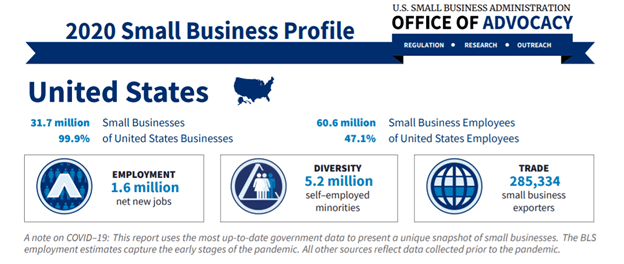
Generally, businesses employing fewer than 1,500 employees and generating less than $21 million in receipts will classify as a small or medium-sized business. While these are the government definitions, in everyday language “small business” is usually taken to mean a business with fewer than 20 employees.
In reality, small and mid-sized businesses are treated about the same when it comes to classification purposes. Research suggests that business owners and customers identify positive qualities with the terms:
- Small Business Owner
- Small Business
- Local Business
Research firm Gallup asked everyday people in the US how much confidence they have in various institutions and small business ranked very favorably at the top of the list:
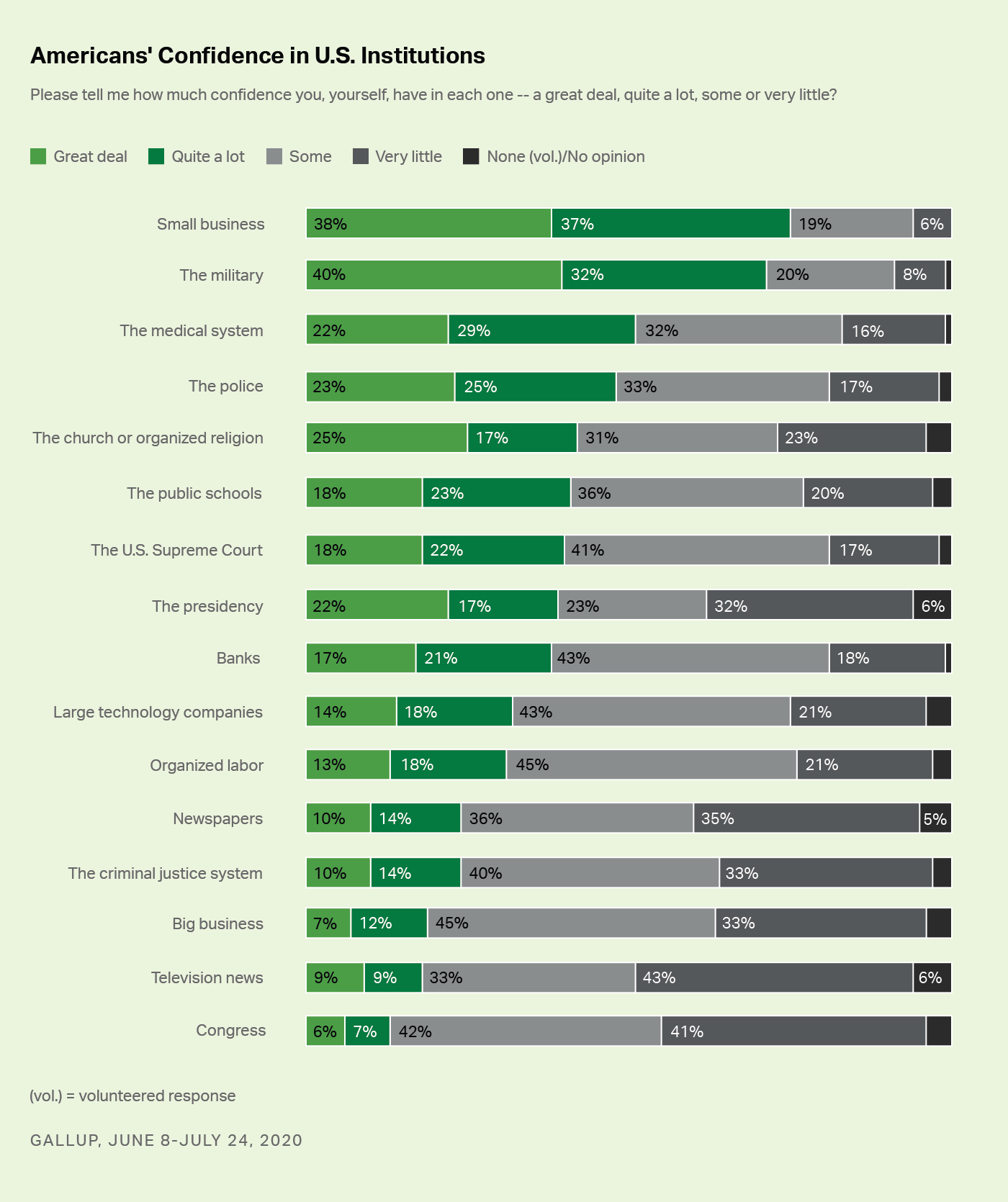
The acronym “SMB” is largely shorthand for marketing departments and isn’t readily understood by everyday people. When marketing to SMBs, it’s best to simply use “small business” when possible.
How to Have a Successful SMB Marketing Strategy
Not every optimization tool or marketing campaign is a good fit for small and mid-sized businesses. Budgets are typically lean, and so leveraging SMB digital marketing techniques is key. We will go through the top SMB marketing strategies along with practical tips for each strategy.
1. Leverage SEO (Search Engine Optimization)
Most marketers anecdotally acknowledge the power of SEO to increase awareness, traffic & conversion. Research from Uberall conducted across 1,000 people sought to understand how they use search in their day-to-day lives. One of the findings that absolutely solidifies the importance of SEO for every business was this one:
“Overall more than 90 percent [of users] were likely to click on the first set of results.”
This means your position and visibility in search results for your keywords is vital to your success online. All of your written content – landing pages, articles, and social posts – should be optimized for search engines. SMB search marketing relies on Google indexing your content and ranking it as relevant to your potential customers’ queries.
SEO tactics for SMB marketing:
- Perform Keyword Research: Use a keyword tool to understand how many people search for your relevant keywords and how competitive they are. This research should guide your copy and future content.
- Integrate Keywords Organically: Adding relevant keywords to the title, heading tags, and throughout the article will help build relevance. But keep your keyword integration as natural and readable as possible.
- Optimize Meta Descriptions: Customize your meta descriptions on each page to include your target keywords. This includes all blog articles and landing pages.
- Incorporate Long-Tail Keywords: These ultra-specific search terms return fewer visitors, but are more likely to lead to sales. Approximately 70% of direct page views come from long-tail keywords.
Expert Tip: Use a DIY SEO Tool
Designed specifically for small businesses, a DIY SEO tool like this one from SEOptimer is compatible with most hosting platforms, including WordPress, Shopify, and Wix.
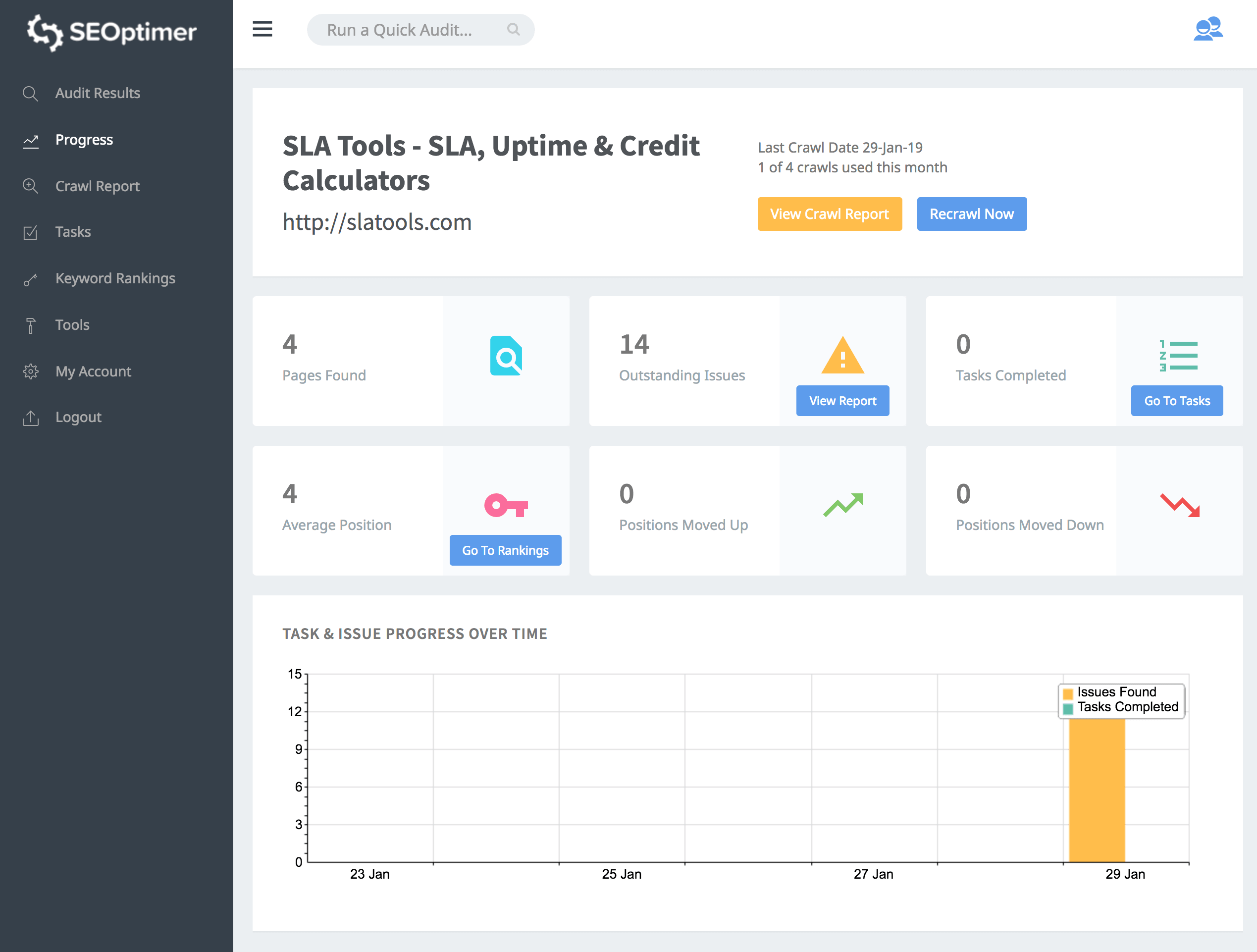
This tool crawls your website and quickly identifies SEO issues and areas for improvement. This allows you to quickly make improvements without investing all of your precious time into keeping up with Google’s latest analytics changes.
2. Setup and Use Google My Business
If you are a small or mid-sized business, you should absolutely be taking advantage of Google My Business. Positive Google reviews are one piece of the SMB search marketing strategy that are often overlooked. Claiming your Google My Business account is the first step to cultivating these positive reviews that ultimately help drive traffic to your business.

This also links your business profile to Google Maps. This is key for SMB marketing strategy since many small businesses cater to a local audience who are searching for goods and services nearby. Mobile users looking for local businesses often bypass Google search and instead search directly in Google Maps.
Claim your Google My Business (GMB) Profile
Claiming your business is as simple as searching for it and submitting a short form on the Google My Business site. You can then start customize your business profile by adding:
- Business description
- Opening hours
- Services
- Special offers
- Photos
- Contact info like Website, Phone Number, Email, Address, etc
Customers can leave reviews on your profile and you should try to encourage your most loyal and happy customers to leave reviews too. These reviews serve as a great source of organic engagement with your business and help make your business stand out in search results and in Google Maps.
GMB tactics for SMB marketing:
- Post news, offers, and events: like Facebook, GMB supports posts so you should post new updates to your GMB profile as these will be displayed prominently to visitors in search results or in your Google Maps listing.
- Incentivize reviews: offer your customers something in return for leaving your business a Google review.
- Optimize your profile: complete every field comprehensively - be as complete as possible.
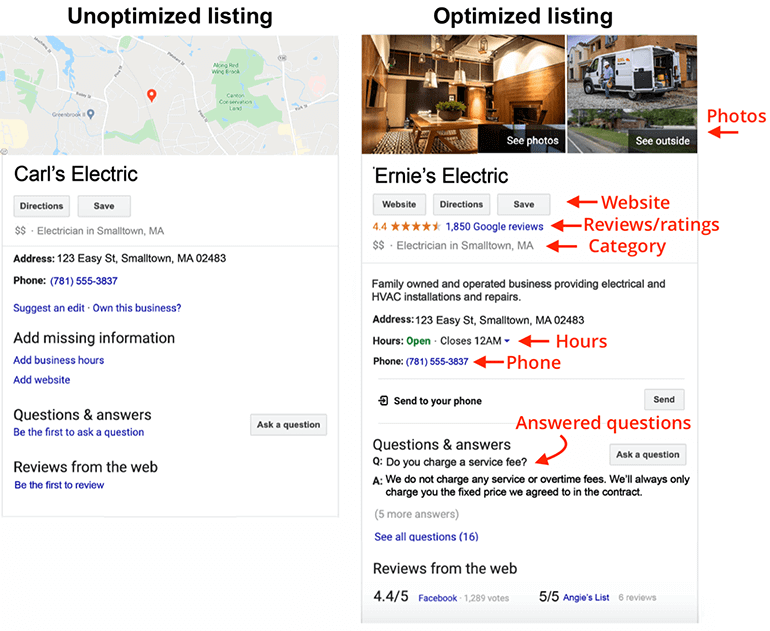
Case Study: Local Venue Rental Saw Traffic Boost
One small business owner decided to track the results of his GMB profile. Within the first three months, he saw nearly 400 new views to his business page, some of which saw real-world conversions.
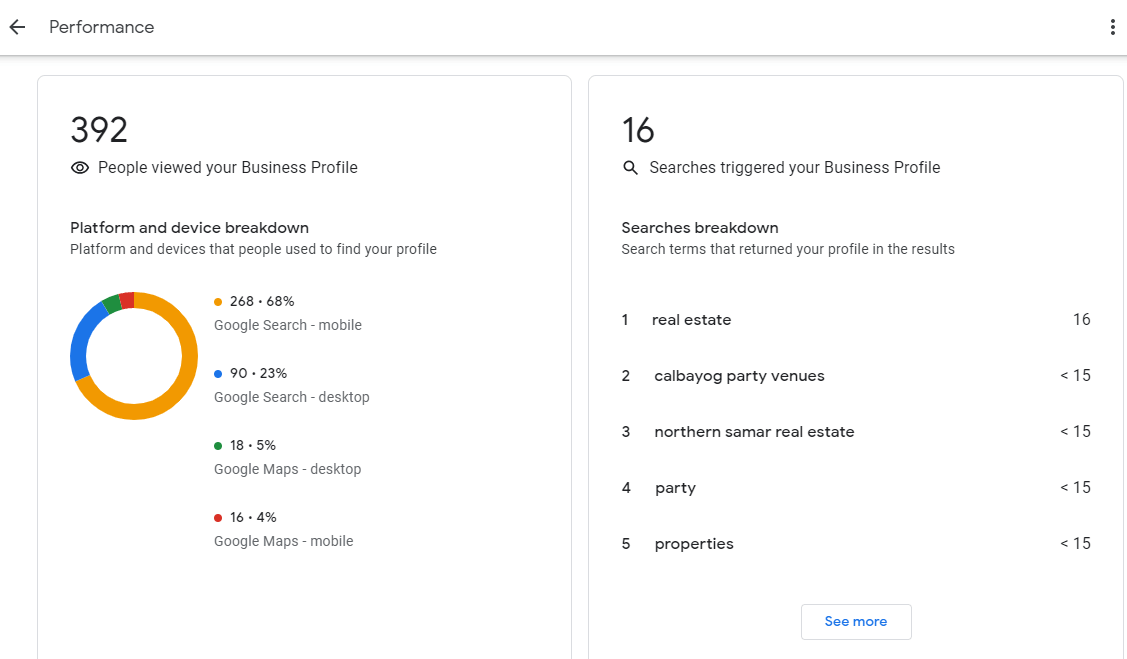
For a few minutes of time spent setting up GMB, it's absolutely worth the time investment.
3. Invest in Content Marketing
While blogs and web pages are key components of your SMB digital marketing strategy, content marketing also includes other forms of digital content like:
- Podcasts
- Videos
- Ebooks
- Webinars
- Templates
- Infographics
- White papers
If you’re a solo marketer or working with a small team, you can’t focus on the entire list. Content marketing is labor-intensive and you can spread yourself (or your team) too thin very quickly if you overcommit.
Content tactics for SMB marketing:
- Metrics: Always track leads and sales generated from each content marketing initiative. Use a good analytics tool to measure these statistics for everything you publish. If your podcast has ten subscribers, sends no traffic to your site and takes five hours to produce, it’s time for a change.
- Authoritative Content: SMBs must work hard to stand out. Determine your niche with as much specificity as you can, and pair it with search terms. Produce content around your strengths and in the format your customers prefer – while most content marketing focuses on articles, video content is gaining popularity.
- Include Images: Research suggests that articles accompanied by relevant images generate up to 94% more traffic than articles without. It’s increasingly uncommon to consume online content with no connected images. Infographics boost traffic and retention even more.

4. Send Regular Emails
Building a committed email list is one of the best content strategy investments a small business can make. According to one study, email marketing generated a 15.11% conversion rate in 2020, which is considered quite high.
Email tactics for SMB marketing:
- Subject Line: The quality of your subject line directly impacts your open rate. Most email marketing platforms provide functionality to test multiple subject lines. This enables you to run A/B or split tests with each send. In this simple example below, you can see 2 different subject line variations have been tested which resulted in very different results:

If you have a large email subscription base, you can test subject lines on the first 10 or 20% of sends. Then send the "winning" subject line to the rest of the base. In any case, you can progressively learn more about what subject lines are of most interest to your subscribers as you send more emails.
- Always add Value: Marketers love email because it's a free channel but you should not take advantage of this. With every email you send to customers, always ask yourself: "am I adding value?". Spammy, self-serving emails end up getting ignored, or even worse, marked as spam or unsubscribed.
- Call to Action (CTA): With each email you send, consider what your main CTA is. Are you sending more of a newsletter with lots of headlines to get people clicking through? Are you sending an offer? If so, is there a clear button or link to claim? Think about your desired action and make sure your email body is optimized to encourage the action.
5. Use Social Media Channels
48% of the global population uses social media. The goal is to get your small business’s posts in front of potential customers. To be effective, social media marketing for small businesses needs to be:
- Accurate
- Responsive
- Engaging
Managing social media takes time. The best tactic for most small businesses is to focus your efforts on a couple of main channels – ideally the ones where your audience is active.
Social media tactics for SMB marketing:
- Use a social media scheduler: Creating and uploading your social posts once a week is far less time-consuming than trying to post constantly. It also allows you to post at strategic times when your targeted audience is most active. Facebook's Creator Studio provides a free scheduling tool for Facebook and Instagram - ideal for small businesses.
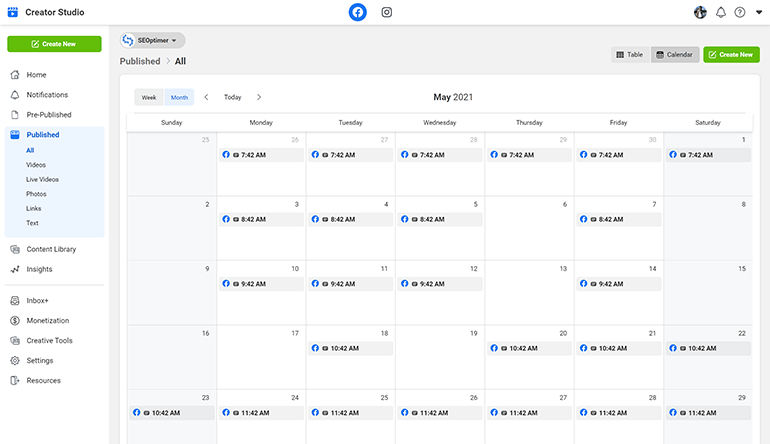
- Conduct audience research: Monitor your existing analytics tools – like Google Analytics or Facebook Insights – to determine your customer base’s demographic makeup, interests, and pain points. Researching competitors can give a new business similar information. Then, use this information to double down on your audience’s favorite platforms and content.
- Be consistent: Your social channels should be regularly featuring posts highlighting sales, themed posts in line with relevant events, and even customer-submitted images of people enjoying your products/services. Social media is designed to be social, so don’t let your channels feel like a stale, outdated landing page.
As a small business, you should streamline your marketing strategy whenever possible. Multi-channel marketing or its cousin, connected marketing, can be a great way to cut down on effort and time.
These tactics are great for single-person or small team marketers, because they focus on executing a campaign across multiple channels. If successful, they also unify the experience for the customer
Small business owners wear many hats: a recent study showed that 66% of small business owners managed three or more areas like marketing, finance, IT, or product development. In a large company, these would all be separate departments with dozens or even hundreds of employees.
Planning can help lighten the load. Try one of these tips if you are personally responsible for your SMB marketing:
- Use a content calendar
- Use a content management system
- Plan marketing campaigns several months in advance
- Break down marketing tasks into component parts so they can be delegated
- Use a social media scheduler
Other Types of SMB Marketing Strategies
Most marketing strategies for small and mid-sized businesses boil down to SEO, Content, Social, and Google My Business, which we covered above.
Other options to explore include:
- Paid search: running ads on Google's search results page with Google Ads
- Influencer marketing: finding and working with influencers and/or creators to reach your target audience
- Partnerships & collabs: partnering with other complimentary businesses to cross-promote products/services
- Local events: organizing local events, networking nights and meetups relevant to your industry
Whichever strategies you choose to focus on, paying attention to your small business marketing tactics is the smart way to boost search traffic, drive sales, and ultimately grow your business. What tactics do you like to use? Let us know on Twitter @seoptimer!










